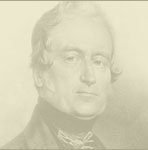

 |
QuébecThe arrival of Jacques Cartier in Gaspé in 1534 marked the beginning of French colonization of the territory that was to become Québec1. But the founding of Québec by Samuel de Champlain in 1608, and of Montréal by Paul Chomedey de Maisonneuve in 1642 laid the real groundwork for the future of the colony. The territory was then mostly occupied by Iroquois, Algonquin and Montagnais. In the 17th century, the French Empire expanded rapidly in America as a result of various expeditions. But this was short-lived because of the wars that opposed France and England in the 18th century. France ceded Acadia, Newfoundland and lands surrounding the Hudson Bay in 1713, then the entire North American colony in 1763. New France was surrendered under the Treaty of Paris signed in 1763, and British troops took over both Québec and Montréal in 1759 and 1760. After the Conquest, the French Canadians waived their rights and powers and claims to property. The Rebellions of 1837 and 1838 under the Russell Resolutions (refusal of self-government) ended in a massive military repression, and three years later, led to the unification of Upper and Lower Canada under one government. The first democratic government under the Act of Union was made up of a coalition of reformers headed by Robert Baldwin and Louis-Hippolyte Lafontaine in 1848. From 1864, the British colonies were contemplating a political union. Strongly supported by George-Étienne Cartier and John Alexander Macdonald, Confederation was achieved in 1867 under the new name of Dominion of Canada in the British North America Act, consisting of the united Province of Canada, divided to form the provinces of Québec and Ontario, and Nova Scotia and New Brunswick. The last twenty years of the 19th century were marked by far-reaching changes: industrialization and urbanization, and population shifts to the United States. Those trends increased greatly in the first decades of the 20th century. Montréal was now the main industrial centre of Québec and was becoming a metropolis, greatly contributing to the development of the West. On the political scene, the Conservative Party had been in the forefront from Confederation to 1896, but the Liberal Party gained firm ground from 1896 to 1936. Industrialization was increasing at a rapid pace, and the Liberal Party fully supported it. That view was not shared by all, and many nationalists and members of the clergy were opposed to massive industrialization, favoring instead a more conservative society. Conscription in both World War I and II, sparked lively debate among French Canadians, who opposed it, as they felt little attachment to England. Due to the Depression in the 1930s, the federal government became actively involved in the economic management of provinces and in the centralization of powers, to the detriment of Québec autonomy. This trend accelerated because of World War II, thus paving the way for incessant warfare between the central government and provincial governments, which is characteristic of the second half of the 20th century. | ||||||||||
| Français |
Credits |
||